 Search by Keyword
|
"PIGGIES"
(George Harrison)
When examining The Beatles catalog, you begin to see patterns in relation to the time periods during which the songs were written. Some are very easy to determine, such as identifying the time period John Lennon wrote "I Should Have Known Better" as compared to "Revolution." Equally easy would be determining when Paul McCartney wrote "And I Love Her" as compared to "Penny Lane."
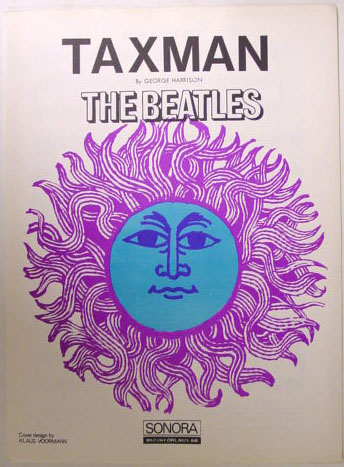 As The Beatles were maturing, as well as dabbling with various life experiences, their compositions reflected the state of mind they were in at the time. Sometimes, however, something stands out as being out of character for the year it was delivered to the masses. For instance, George Harrison went through a cynical phase in his songwriting output in 1966, evidenced in his open attack on the British government on his song “Taxman” as well as authority in general in lines such as “There's people standing 'round who'll screw you in the ground” from his song “Love You To.” As The Beatles were maturing, as well as dabbling with various life experiences, their compositions reflected the state of mind they were in at the time. Sometimes, however, something stands out as being out of character for the year it was delivered to the masses. For instance, George Harrison went through a cynical phase in his songwriting output in 1966, evidenced in his open attack on the British government on his song “Taxman” as well as authority in general in lines such as “There's people standing 'round who'll screw you in the ground” from his song “Love You To.”
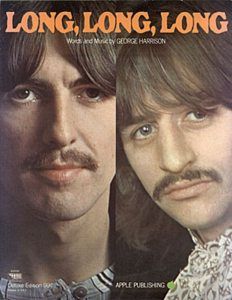 However, George tamed his lyrical approach noticeably after his acquaintance with the culture and spirituality of India. Shortly thereafter, his compositions focused more on spreading his newly found philosophy (“Within You Without You”) and deep love for God (“Long Long Long”). He may have touched on more mundane subjects (such as in “Blue Jay Way” and “Savoy Truffle”) but the biting and accusatory tone of his lyrics was gone. However, George tamed his lyrical approach noticeably after his acquaintance with the culture and spirituality of India. Shortly thereafter, his compositions focused more on spreading his newly found philosophy (“Within You Without You”) and deep love for God (“Long Long Long”). He may have touched on more mundane subjects (such as in “Blue Jay Way” and “Savoy Truffle”) but the biting and accusatory tone of his lyrics was gone.
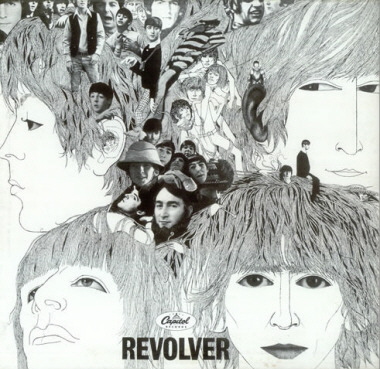 Why, then, would a song with such a scathing political bent as “Piggies” emerge from the pen of George Harrison in 1968? Hadn't that aspect of his thinking been replaced by more virtuous and spiritual attitudes by then? Did the Maharishi inspire such vitriolic sentiments? Wouldn't this song have fit better on the 1966 album “Revolver” instead of the “White Album”? Why, then, would a song with such a scathing political bent as “Piggies” emerge from the pen of George Harrison in 1968? Hadn't that aspect of his thinking been replaced by more virtuous and spiritual attitudes by then? Did the Maharishi inspire such vitriolic sentiments? Wouldn't this song have fit better on the 1966 album “Revolver” instead of the “White Album”?
Songwriting History
 George himself can answer these questions with this quote from 1968: "That one I wrote about two-and-a-half or three years ago, but I never finished it...I had put the lyrics in a book at home and I had completely forgotten about it until last summer when I dug them out." So it can be established that "Piggies" was indeed mostly written in 1966, sometime near the time that he had composed the equally biting "Taxman." George himself can answer these questions with this quote from 1968: "That one I wrote about two-and-a-half or three years ago, but I never finished it...I had put the lyrics in a book at home and I had completely forgotten about it until last summer when I dug them out." So it can be established that "Piggies" was indeed mostly written in 1966, sometime near the time that he had composed the equally biting "Taxman."
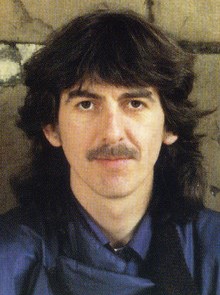 In 1980, George elaborated further about the writing of the song. “'Piggies' is a social comment. I was stuck for one line in the middle until my mother came up with the lyric, 'What they need's a damn good whacking' which is a nice simple way of saying they need a good hiding. It needed to rhyme with 'backing,' 'lacking.'” In 1980, George elaborated further about the writing of the song. “'Piggies' is a social comment. I was stuck for one line in the middle until my mother came up with the lyric, 'What they need's a damn good whacking' which is a nice simple way of saying they need a good hiding. It needed to rhyme with 'backing,' 'lacking.'”
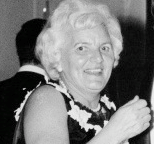 George warmly credits his mother Louise Harrison for the above mentioned lyric to complete the song. He elicited her help, no doubt, at the time he discovered his original written lyrics at his parents home. George also added another verse to the song in 1968 consisting of the lyrics, “Everywhere there's lots of piggies/ playing piggy pranks/ you can see them on their trotters/ at the piggy banks/ paying piggy thanks/ to thee Pig Brother.” George warmly credits his mother Louise Harrison for the above mentioned lyric to complete the song. He elicited her help, no doubt, at the time he discovered his original written lyrics at his parents home. George also added another verse to the song in 1968 consisting of the lyrics, “Everywhere there's lots of piggies/ playing piggy pranks/ you can see them on their trotters/ at the piggy banks/ paying piggy thanks/ to thee Pig Brother.”
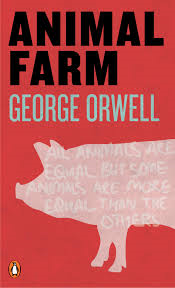 The writings of author George Orwell were definitely playing a big part in the lyrics of “Piggies,” most noteworthy being his 1945 classic “Animal Farm” which similarly infused political views into the storyline. In this popular novel, the pigs decree that "all animals are equal, but some animals are more equal than others," a humorous but disturbing thought that George expanded on in his song. And as evidenced in the newly written verse mentioned above, George's inclusion of the lyric “Pig Brother” was undoubtedly a sly reference to the “Big Brother” theme of George Orwell's final masterpiece “1984,” which Harrison even mentioned in his 1971 appearance on the Dick Cavett Show. George, however, decided to omit this extra verse when the song was recorded, premiering it on stage during his December, 1991 tour of Japan. The writings of author George Orwell were definitely playing a big part in the lyrics of “Piggies,” most noteworthy being his 1945 classic “Animal Farm” which similarly infused political views into the storyline. In this popular novel, the pigs decree that "all animals are equal, but some animals are more equal than others," a humorous but disturbing thought that George expanded on in his song. And as evidenced in the newly written verse mentioned above, George's inclusion of the lyric “Pig Brother” was undoubtedly a sly reference to the “Big Brother” theme of George Orwell's final masterpiece “1984,” which Harrison even mentioned in his 1971 appearance on the Dick Cavett Show. George, however, decided to omit this extra verse when the song was recorded, premiering it on stage during his December, 1991 tour of Japan.
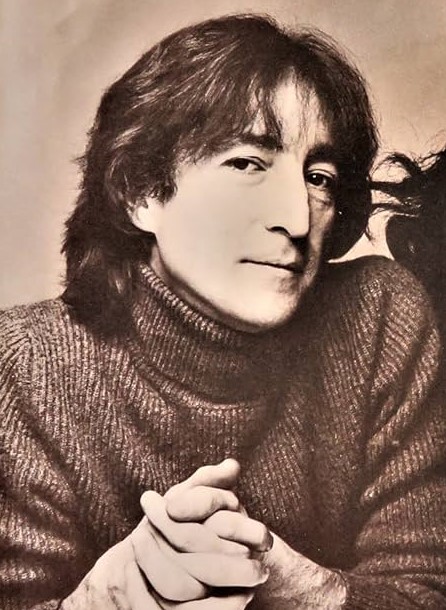 Someone else appears to have had a small part in writing the lyrics as well. “I gave George a couple of lines about forks and knives and eating bacon,” stated John Lennon in 1980. George appeared to be a little hesitant about the “bacon” reference for some reason, he awkwardly replacing the phrase with “clutching forks and knives to cut their pork chops” when he recorded the initial demo version in mid 1968. Someone else appears to have had a small part in writing the lyrics as well. “I gave George a couple of lines about forks and knives and eating bacon,” stated John Lennon in 1980. George appeared to be a little hesitant about the “bacon” reference for some reason, he awkwardly replacing the phrase with “clutching forks and knives to cut their pork chops” when he recorded the initial demo version in mid 1968.
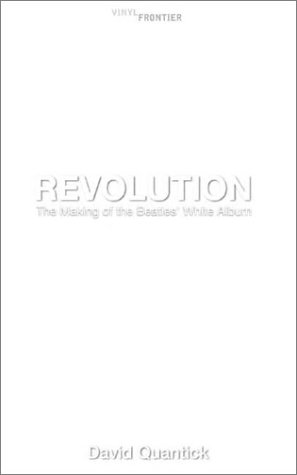 George's “social comment” in the lyric is summed up nicely by David Quantick in his book “Revolution: The Making Of The Beatles' White Album”: “Harrison's piggies are seemingly divided into two types: the little piggies, who are presumably most of us, in the dirt and with ever-worsening lives, and the big piggies, who wear shirts and take their wives to dinner, and who go around 'stirring up the dirt.'” Although the term “pig” had become a derogatory term aimed at the police around that time, George clarifies that the song “had absolutely nothing to do with American policemen.” His arrows were instead aimed at the upper class and/or big politics who “don't care what goes on around” with the plight of the lower class. George's “social comment” in the lyric is summed up nicely by David Quantick in his book “Revolution: The Making Of The Beatles' White Album”: “Harrison's piggies are seemingly divided into two types: the little piggies, who are presumably most of us, in the dirt and with ever-worsening lives, and the big piggies, who wear shirts and take their wives to dinner, and who go around 'stirring up the dirt.'” Although the term “pig” had become a derogatory term aimed at the police around that time, George clarifies that the song “had absolutely nothing to do with American policemen.” His arrows were instead aimed at the upper class and/or big politics who “don't care what goes on around” with the plight of the lower class.
As for the interpretation of the song made by Charles Manson, which I refuse to elaborate on, George was very clear in a 1980 interview that the song had absolutely nothing to do with what he calls “Californian shagnasties!” You can look elsewhere for the gruesome details on that if you must.
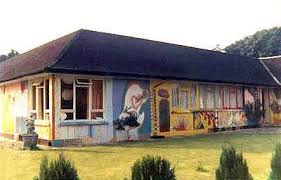
George Harrison's "Kinfauns" house in Esher, Surrey
Recording History
On May 29th, 1968, The Beatles met at George's 'Kinfauns' home in Esher, Surrey, to record demos of the songs they were planning on officially recording for their next album. While the vast majority of the demos they recorded were written while they were in India earlier in the year, "Piggies" was culled from George's backlog of song ideas that, in this case, dated back to early 1966 (as detailed above).
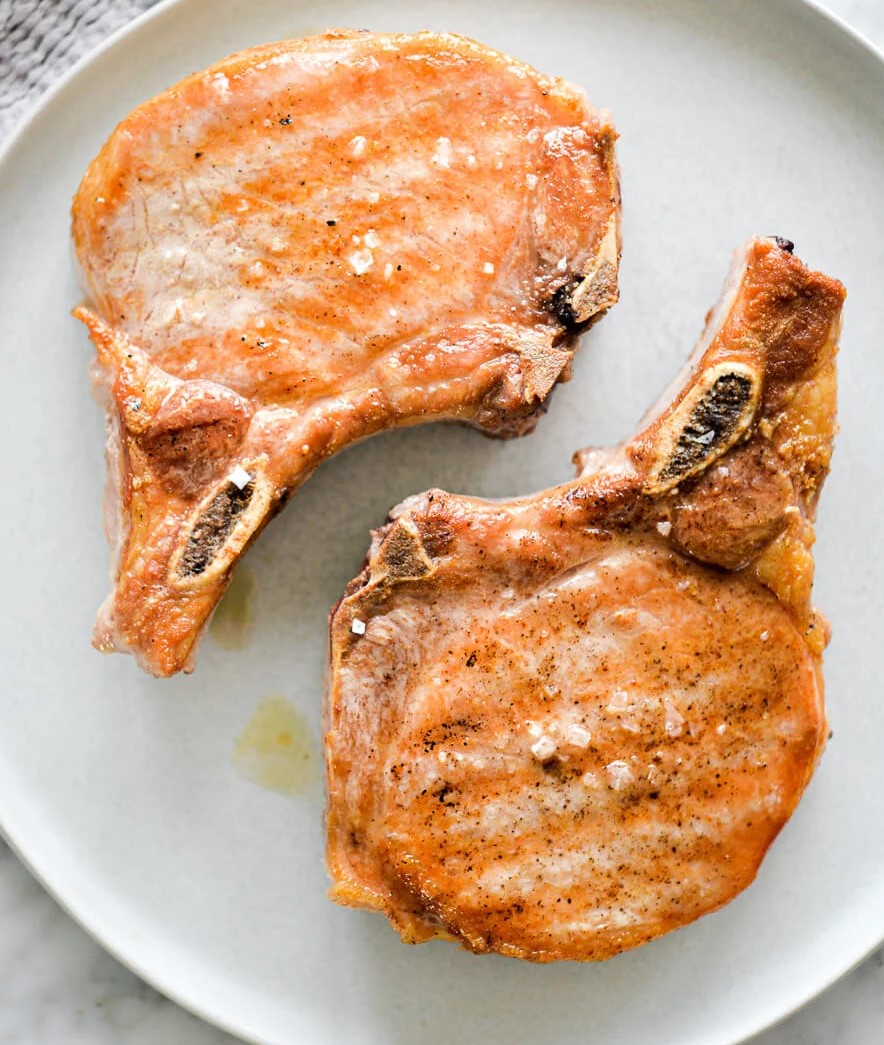 The demo of "Piggies" recorded on this day is quite similar in structure to the finished product and consists of George double-tracked on acoustic guitar and, in most places, vocals as well. An instrumental section had already been put in place, George whistling where a harpsichord solo would eventually be. The final verse, as mentioned above, includes George hesitantly singing about “pork chops” instead of “bacon,” seemingly because he hadn't yet decided which lyric to go with yet. The demo ends somewhat awkwardly, George not as yet having concocted a suitable conclusion to the song. Nonetheless, it already displays the charm heard on the finished product. The demo of "Piggies" recorded on this day is quite similar in structure to the finished product and consists of George double-tracked on acoustic guitar and, in most places, vocals as well. An instrumental section had already been put in place, George whistling where a harpsichord solo would eventually be. The final verse, as mentioned above, includes George hesitantly singing about “pork chops” instead of “bacon,” seemingly because he hadn't yet decided which lyric to go with yet. The demo ends somewhat awkwardly, George not as yet having concocted a suitable conclusion to the song. Nonetheless, it already displays the charm heard on the finished product.
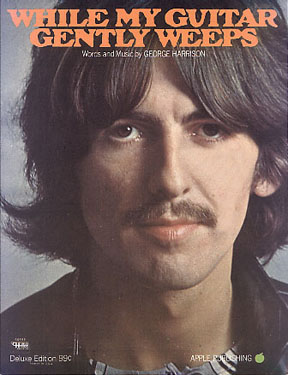 George brought “Piggies” into EMI Studios on September 19th, 1968, this being the third of five Harrison compositions to be recorded for the “White Album,” the first two being “While My Guitar Gently Weeps” and the ill-fated “Not Guilty, which was eventually dropped from the album's lineup. The Beatles entered EMI Studio Two at around 7:15 pm and, shortly thereafter, they began recording takes of "Piggies." On the four-track tape Paul was on bass on track one, Ringo on tambourine and kick drum on track two, George on acoustic guitar on track three, and George's lead vocal on track four, John sitting out during this recording. "I'll just be singing to guide you," George instructed the others, his intentions being to re-record his perfected vocals later as an overdub. In fact, George didn't often sing these 'guide vocals' all the way through these takes of the rhythm track. Ten takes of the rhythm track were recorded in this way before a change in plans came about. George brought “Piggies” into EMI Studios on September 19th, 1968, this being the third of five Harrison compositions to be recorded for the “White Album,” the first two being “While My Guitar Gently Weeps” and the ill-fated “Not Guilty, which was eventually dropped from the album's lineup. The Beatles entered EMI Studio Two at around 7:15 pm and, shortly thereafter, they began recording takes of "Piggies." On the four-track tape Paul was on bass on track one, Ringo on tambourine and kick drum on track two, George on acoustic guitar on track three, and George's lead vocal on track four, John sitting out during this recording. "I'll just be singing to guide you," George instructed the others, his intentions being to re-record his perfected vocals later as an overdub. In fact, George didn't often sing these 'guide vocals' all the way through these takes of the rhythm track. Ten takes of the rhythm track were recorded in this way before a change in plans came about.
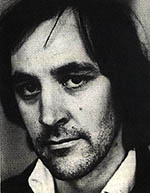 With George Martin away on vacation at this time, Chris Thomas was filling in as producer in his absence. “All four Beatles were there for the session and we were working in (EMI Studio) number two," Chris Thomas recalls about this day. "I wandered into (EMI Studio) number one and found a harpsichord, not knowing that it had been set up overnight for a classical recording. So we discussed wheeling the thing into (EMI Studio) number two but (engineer) Ken Scott said, 'No, we can't, it's there for another session!' So we moved our session into number one instead." The classical session that the harpsichord was brought in for was Jacqueline du Pre playing "Monn's Cello Concerto in G Minor" with the London Symphony Orchestra conducted by Sir John Barbirolli. This session, which was scheduled for the following day, September 20th, 1968, would feature Australian virtuoso Valda Aveling playing a harpsichord, the instrument being delivered to the studio a day early. With George Martin away on vacation at this time, Chris Thomas was filling in as producer in his absence. “All four Beatles were there for the session and we were working in (EMI Studio) number two," Chris Thomas recalls about this day. "I wandered into (EMI Studio) number one and found a harpsichord, not knowing that it had been set up overnight for a classical recording. So we discussed wheeling the thing into (EMI Studio) number two but (engineer) Ken Scott said, 'No, we can't, it's there for another session!' So we moved our session into number one instead." The classical session that the harpsichord was brought in for was Jacqueline du Pre playing "Monn's Cello Concerto in G Minor" with the London Symphony Orchestra conducted by Sir John Barbirolli. This session, which was scheduled for the following day, September 20th, 1968, would feature Australian virtuoso Valda Aveling playing a harpsichord, the instrument being delivered to the studio a day early.
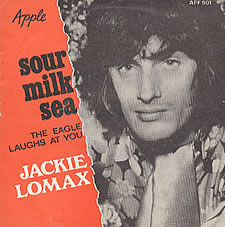 As found in the book “The Beatles Recording Sessions,” Chris Thomas continues about this session: “George Harrison agreed that my harpsichord idea was a good one and suggested that I play it. (Chris Thomas had studied part-time at the Royal Academy of Music as a child.) This I did, but while George and I were tinkling away on this harpsichord, he starting playing another new song to me, which later turned out to be 'Something.' I said, 'That's great! Why don't we do that one instead?' and he replied, 'Do you like it, do you really think it's good?' When I said yes, he said 'Oh, maybe I'll give it to Jackie Lomax then, he can do it as a single.” This, of course, never happened, “Something” being recorded by The Beatles the following year and becoming the first and only George Harrison song to be released as the a-side of a Beatles single and one of his most famous compositions. George instead offered up another self-penned song from this era, "Sour Milk Sea," to newly signed Apple Records artist Jackie Lomax for his album "Is This What You Want?" as well as being the a-side of the fourth single release for the new Beatles record label. As found in the book “The Beatles Recording Sessions,” Chris Thomas continues about this session: “George Harrison agreed that my harpsichord idea was a good one and suggested that I play it. (Chris Thomas had studied part-time at the Royal Academy of Music as a child.) This I did, but while George and I were tinkling away on this harpsichord, he starting playing another new song to me, which later turned out to be 'Something.' I said, 'That's great! Why don't we do that one instead?' and he replied, 'Do you like it, do you really think it's good?' When I said yes, he said 'Oh, maybe I'll give it to Jackie Lomax then, he can do it as a single.” This, of course, never happened, “Something” being recorded by The Beatles the following year and becoming the first and only George Harrison song to be released as the a-side of a Beatles single and one of his most famous compositions. George instead offered up another self-penned song from this era, "Sour Milk Sea," to newly signed Apple Records artist Jackie Lomax for his album "Is This What You Want?" as well as being the a-side of the fourth single release for the new Beatles record label.
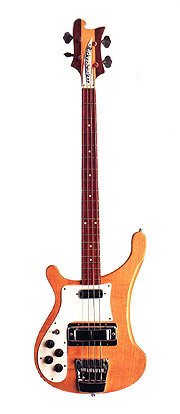 The Beatles then moved this session over to EMI Studio One to utilize the harpsichord which Chris Thomas would play. After all the other instruments and microphones were in place, they only needed to record one further take, "take 11," to complete the rhythm track. In a 2019 interview for "Talk More Talk," Chris Thomas remembers: "I starting playing on the backing track and I couldn't keep time. It was really difficult...I wasn't a good people player. I hadn't practiced. I hadn't played for years, so it was pretty ropey. So they overdubbed it...They said, 'play a solo,' so I sort of wrote a solo. I had written a little kind of Bach inspired thing when I was a kid which I called 'The Minute Sonata" after 'The Minute Waltz.' It did actually last a minute, the first, second and third movement...that's why I was sort of used to fiddling around playing." The haprsichord now replaced George's guide vocal on track four of the four-track tape, The Beatles undoubtedly now being familiar with the song enough not to need his vocal guidance. As for Paul's bass work on the song, author Mark Lewisohn, in "The Beatles Recording Sessions," describes it as “individual string plucking managing to evoke the sound of a pig grunting.” The Beatles then moved this session over to EMI Studio One to utilize the harpsichord which Chris Thomas would play. After all the other instruments and microphones were in place, they only needed to record one further take, "take 11," to complete the rhythm track. In a 2019 interview for "Talk More Talk," Chris Thomas remembers: "I starting playing on the backing track and I couldn't keep time. It was really difficult...I wasn't a good people player. I hadn't practiced. I hadn't played for years, so it was pretty ropey. So they overdubbed it...They said, 'play a solo,' so I sort of wrote a solo. I had written a little kind of Bach inspired thing when I was a kid which I called 'The Minute Sonata" after 'The Minute Waltz.' It did actually last a minute, the first, second and third movement...that's why I was sort of used to fiddling around playing." The haprsichord now replaced George's guide vocal on track four of the four-track tape, The Beatles undoubtedly now being familiar with the song enough not to need his vocal guidance. As for Paul's bass work on the song, author Mark Lewisohn, in "The Beatles Recording Sessions," describes it as “individual string plucking managing to evoke the sound of a pig grunting.”
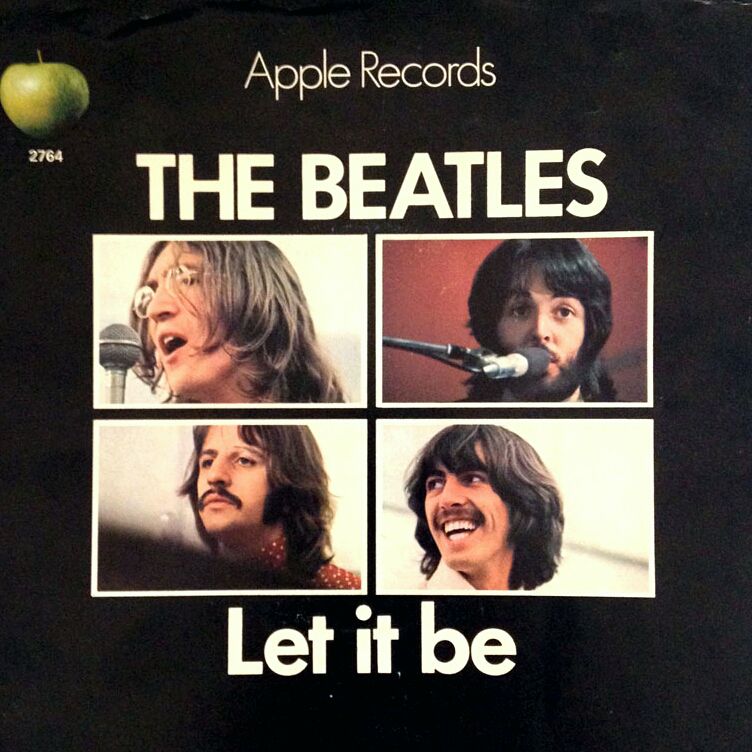 Sometime during this session, another new Beatles song was taking shape. “There were a couple of other songs around at this time,” Chris Thomas recalls. “Paul was running through 'Let It Be' between takes.” Although other McCartney compositions were yet to be recorded for the "White Album" at this point, Paul decided to wait another three-and-a-half months before he readied this song for the studio. This wasn't the first time Paul premiered the song in the studio, however. Two weeks prior to this, on September 5th, 1968, Paul led his bandmates through an impromptu version of "Let It Be" in between takes of George's "While My Guitar Gently Weeps," this recording being included on the Super Deluxe edition of the 50th Anniversary "White Album" box set. Sometime during this session, another new Beatles song was taking shape. “There were a couple of other songs around at this time,” Chris Thomas recalls. “Paul was running through 'Let It Be' between takes.” Although other McCartney compositions were yet to be recorded for the "White Album" at this point, Paul decided to wait another three-and-a-half months before he readied this song for the studio. This wasn't the first time Paul premiered the song in the studio, however. Two weeks prior to this, on September 5th, 1968, Paul led his bandmates through an impromptu version of "Let It Be" in between takes of George's "While My Guitar Gently Weeps," this recording being included on the Super Deluxe edition of the 50th Anniversary "White Album" box set.
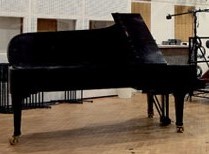 Possibly on this day, yet another big McCartney tune was premiered. Technical engineer Alan Brown distinctly remembers assisting Paul to quickly tape a demo version of “The Long And Winding Road” on the grand piano that was located in EMI Studio One. The tape was given over to Paul after this demo was recorded, undoubtedly for him to review and refine the song for proper recording in January of 1969. Possibly on this day, yet another big McCartney tune was premiered. Technical engineer Alan Brown distinctly remembers assisting Paul to quickly tape a demo version of “The Long And Winding Road” on the grand piano that was located in EMI Studio One. The tape was given over to Paul after this demo was recorded, undoubtedly for him to review and refine the song for proper recording in January of 1969.
 As the session was winding down in the early hours of the next morning, the undoubtedly slap-happy Beatles decided to conclude the day with a very silly recording. According to the book accompanying the Super Deluxe edition of the "White Album" 50th Anniversary box set, "all four members of the group were recorded across the four tracks - laughing. The rather sinister-sounding guffaws were not used in any Beatles recording at the time." It was used later, however, by George Martin and his son Giles Martin when putting together the track "Being For The Benefit Of Mr. Kite!" for the Cirque du Soleil compilation album "Love," which was released in 2006. With this crazy recording experiment out of the way, this day's recording session was complete by 5:30 am. As the session was winding down in the early hours of the next morning, the undoubtedly slap-happy Beatles decided to conclude the day with a very silly recording. According to the book accompanying the Super Deluxe edition of the "White Album" 50th Anniversary box set, "all four members of the group were recorded across the four tracks - laughing. The rather sinister-sounding guffaws were not used in any Beatles recording at the time." It was used later, however, by George Martin and his son Giles Martin when putting together the track "Being For The Benefit Of Mr. Kite!" for the Cirque du Soleil compilation album "Love," which was released in 2006. With this crazy recording experiment out of the way, this day's recording session was complete by 5:30 am.
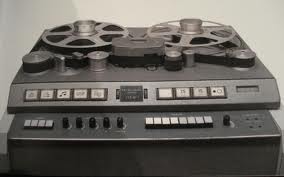 The following day (that is, later that day), September 20th, 1968, The Beatles reconvened in EMI Studio Two at around 7 pm to perform overdubs on “Piggies.” Since the rhythm track for the song was recorded on four-track tape, the first order of business was to make a tape copy of the rhythm track onto eight-track tape to allow for four open tracks for overdubbing, in the process turning "take 11" into "take 12." The following day (that is, later that day), September 20th, 1968, The Beatles reconvened in EMI Studio Two at around 7 pm to perform overdubs on “Piggies.” Since the rhythm track for the song was recorded on four-track tape, the first order of business was to make a tape copy of the rhythm track onto eight-track tape to allow for four open tracks for overdubbing, in the process turning "take 11" into "take 12."
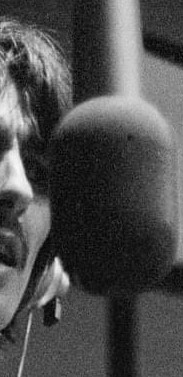 The first overdub recorded was George's lead vocal onto track six, which was then double-tracked onto track seven during the lines “play around in” (heard twice in the song) and “damn good whacking” (heard once in the song). George requested something unique for the vocals in the bridge of the song, this being a nasal sound as if he was pinching his nose. Technical engineer Ken Townsend relates how he accomplished this effect: “We fed the microphone signal through a very sharp echo chamber filter, an RS106, so that it chopped off everything above and below the 3.5 kilohertz level, creating a very narrow band of sound.” The first overdub recorded was George's lead vocal onto track six, which was then double-tracked onto track seven during the lines “play around in” (heard twice in the song) and “damn good whacking” (heard once in the song). George requested something unique for the vocals in the bridge of the song, this being a nasal sound as if he was pinching his nose. Technical engineer Ken Townsend relates how he accomplished this effect: “We fed the microphone signal through a very sharp echo chamber filter, an RS106, so that it chopped off everything above and below the 3.5 kilohertz level, creating a very narrow band of sound.”
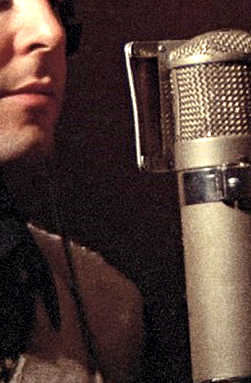 Track five was filled with George and Paul singing harmonies in the final verse in a very "butch" voice while John sang the melody two octaves below them. In the process, George uttered some pig snorting noises, but they were faded down during the mixing process. They apparently ran through this vocal overdub several times to get it right. At the beginning of the final attempt, John states, "I'm a fabulous, fabulous vegetarian," followed by George instructing the engineers, "One more, one more time, not that far back," which undoubtedly meant that they were spooling the master tape back too far during previous attempts at recording this vocal overdub. Track five was filled with George and Paul singing harmonies in the final verse in a very "butch" voice while John sang the melody two octaves below them. In the process, George uttered some pig snorting noises, but they were faded down during the mixing process. They apparently ran through this vocal overdub several times to get it right. At the beginning of the final attempt, John states, "I'm a fabulous, fabulous vegetarian," followed by George instructing the engineers, "One more, one more time, not that far back," which undoubtedly meant that they were spooling the master tape back too far during previous attempts at recording this vocal overdub.
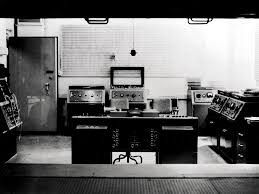 As you may have noticed, John Lennon hadn't been involved in the recording of the song very much. However, he found a very interesting way of contributing to the track: He busied himself in the control room of EMI Studio Two compiling snorting pig sound effects and having them recorded on a tape loop for inserting onto the recording. He was very familiar with this process, having done similar extensive work in compiling sound effects for “Revolution 9” back in June. He once again raided the EMI sound effects collection. “There's a tape called 'Animals and Bees (volume 35) which includes pigs,” recalls Stuart Eltham. “It's from an old EMI 78rpm record and The Beatles may have used a combination of that and their own voices. That always works well – the new voices hide the 78rpm scratchiness, the original record hides the fact that some of the sounds are man-made." This sound effect tape was not added to the eight-track tape at this point but was used later during the mixing stages of the song. As you may have noticed, John Lennon hadn't been involved in the recording of the song very much. However, he found a very interesting way of contributing to the track: He busied himself in the control room of EMI Studio Two compiling snorting pig sound effects and having them recorded on a tape loop for inserting onto the recording. He was very familiar with this process, having done similar extensive work in compiling sound effects for “Revolution 9” back in June. He once again raided the EMI sound effects collection. “There's a tape called 'Animals and Bees (volume 35) which includes pigs,” recalls Stuart Eltham. “It's from an old EMI 78rpm record and The Beatles may have used a combination of that and their own voices. That always works well – the new voices hide the 78rpm scratchiness, the original record hides the fact that some of the sounds are man-made." This sound effect tape was not added to the eight-track tape at this point but was used later during the mixing stages of the song.
With these overdubs complete, the session ended only four hours later, at 11 pm. This completed The Beatles' contribution to “Piggies,” but more was to come before the song was deemed complete.
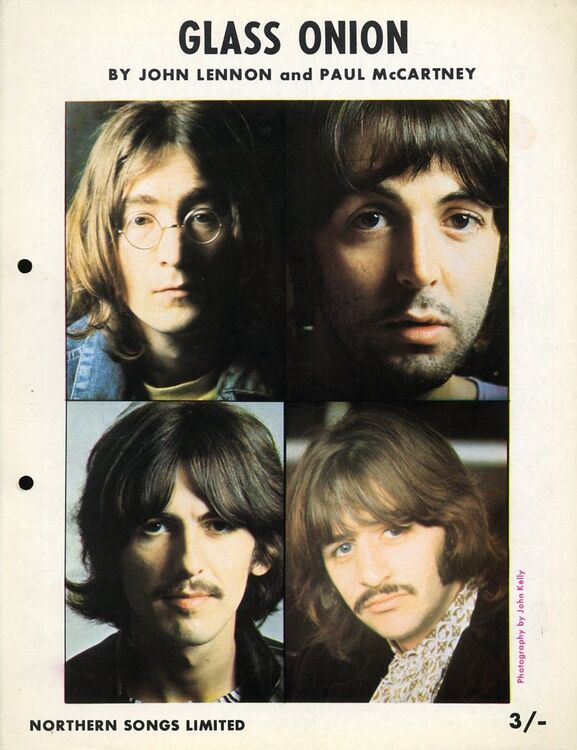 With the deadline for the completion of the “White Album” coming up quickly, all loose ends needed to be tightened up. On October 10th, 1968, with the vacationing George Martin back in the producer's chair, the final session for “Piggies” was held in EMI Studio Two, beginning around 7 pm. George Martin had written orchestral scores for both “Piggies” and John's song “Glass Onion,” these being recorded on this day. The string musicians recorded their parts onto tracks seven and eight of the eight-track tape, leaving George's minimal double-tracked vocals, previously recorded on track seven, intact. Eight classical string instrumentalists were present, undoubtedly performing their parts for both songs quickly before being dismissed at approximately 11 pm. After numerous mixes of other “White Album” songs were created by the engineering team, as well as Paul finishing up his song “Why Don't We Do It In The Road” in EMI Studio Three, the session finally ended at 7:15 am the following morning. With the deadline for the completion of the “White Album” coming up quickly, all loose ends needed to be tightened up. On October 10th, 1968, with the vacationing George Martin back in the producer's chair, the final session for “Piggies” was held in EMI Studio Two, beginning around 7 pm. George Martin had written orchestral scores for both “Piggies” and John's song “Glass Onion,” these being recorded on this day. The string musicians recorded their parts onto tracks seven and eight of the eight-track tape, leaving George's minimal double-tracked vocals, previously recorded on track seven, intact. Eight classical string instrumentalists were present, undoubtedly performing their parts for both songs quickly before being dismissed at approximately 11 pm. After numerous mixes of other “White Album” songs were created by the engineering team, as well as Paul finishing up his song “Why Don't We Do It In The Road” in EMI Studio Three, the session finally ended at 7:15 am the following morning.
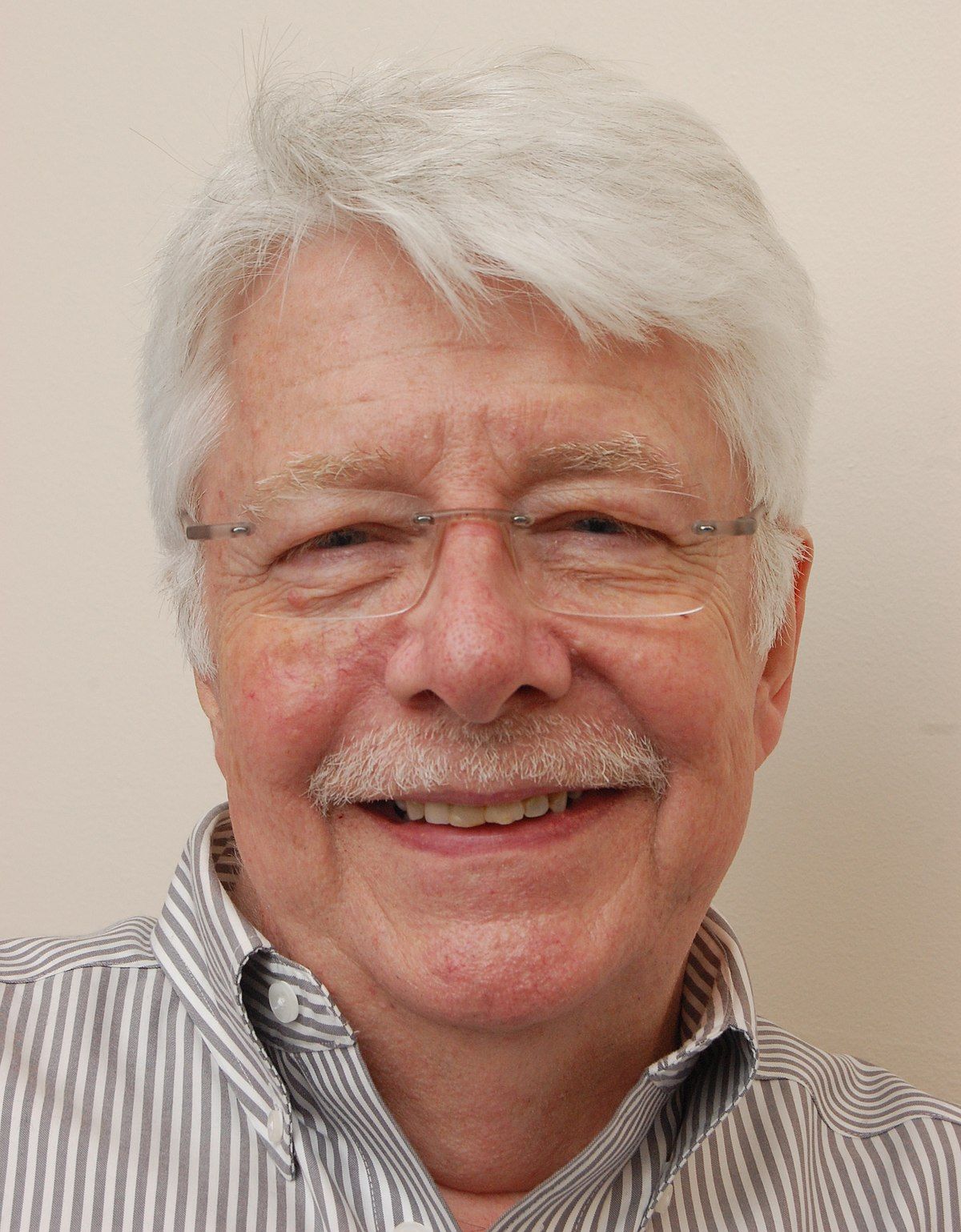 The mono and stereo mixes of “Piggies” were created the following day, October 11th, 1968, in the control room of EMI Studio Two between 6 pm and midnight by George Martin and engineers Ken Scott and John Smith. Four tries of the mono mix were made and three of the stereo, both of which included a "flown in" snippet of George saying "one more time" from the beginning of track five as mentioned above, inserting it just before the final orchestral ending on both mixes. The only noticeable differences between the mono and stereo mixes were the different placements of the pig sound effects that were previously compiled by John, which were added at this stage, and a louder acoustic guitar in the mono mix The mono and stereo mixes of “Piggies” were created the following day, October 11th, 1968, in the control room of EMI Studio Two between 6 pm and midnight by George Martin and engineers Ken Scott and John Smith. Four tries of the mono mix were made and three of the stereo, both of which included a "flown in" snippet of George saying "one more time" from the beginning of track five as mentioned above, inserting it just before the final orchestral ending on both mixes. The only noticeable differences between the mono and stereo mixes were the different placements of the pig sound effects that were previously compiled by John, which were added at this stage, and a louder acoustic guitar in the mono mix
Sometime in 1996, George Martin and Geoff Emerick created a mix of the Esher demo of the song for inclusion on the compilation album "Anthology 3."
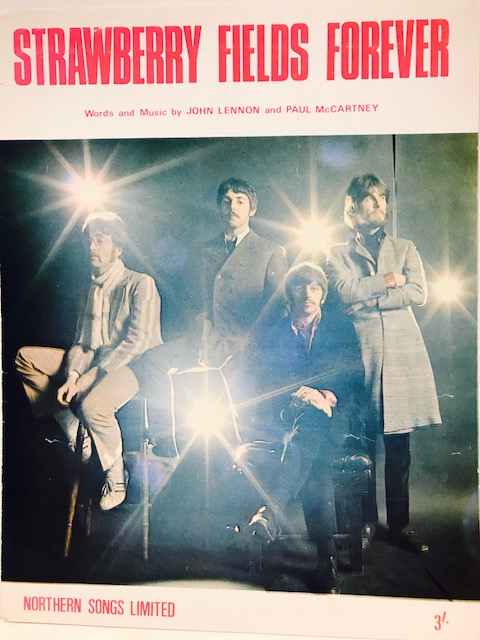 George Martin and his son Giles Martin included segments of the official EMI recording of "Piggies" on two selections found on the 2006 album "Love." On the track "Being For The Benefit Of Mr. Kite!/I Want You (She's So Heavy)/Helter Skelter," the sinister-sounding laughing that was recorded at the end of the first "Piggies" session, as mentioned above, is included. The track "Strawberry Fields Forever" includes a bit of the cello and harpsichord from "Piggies" as well, these composite tracks being constructed sometime between 2004 and 2006 in Abbey Road Studios. George Martin and his son Giles Martin included segments of the official EMI recording of "Piggies" on two selections found on the 2006 album "Love." On the track "Being For The Benefit Of Mr. Kite!/I Want You (She's So Heavy)/Helter Skelter," the sinister-sounding laughing that was recorded at the end of the first "Piggies" session, as mentioned above, is included. The track "Strawberry Fields Forever" includes a bit of the cello and harpsichord from "Piggies" as well, these composite tracks being constructed sometime between 2004 and 2006 in Abbey Road Studios.
 Sometime in 2018, Giles Martin and engineer Sam Okell returned to the master tapes to create a new vibrant stereo mix of the song for inclusion in the various editions of the "White Album" 50th Anniversay releases. They also made a new mix of the Esher demo of "Piggies," as well as an instrumental version of "take 12" from the original EMI master tape . Sometime in 2018, Giles Martin and engineer Sam Okell returned to the master tapes to create a new vibrant stereo mix of the song for inclusion in the various editions of the "White Album" 50th Anniversay releases. They also made a new mix of the Esher demo of "Piggies," as well as an instrumental version of "take 12" from the original EMI master tape .
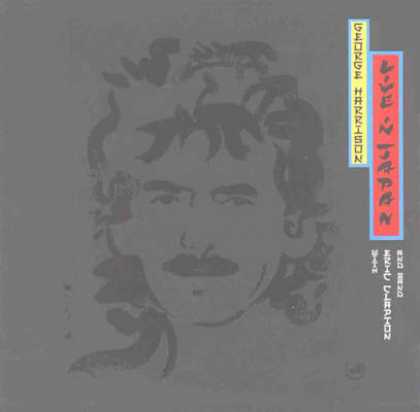 Another recording of “Piggies” was done sometime between December 1st and 17th, 1991 during George's brief Japanese tour, this being released on his album “Live In Japan.” As mentioned above, George premiered the lost extra verse during this tour as he had done with other songs in the set list, such as “Taxman.” Another recording of “Piggies” was done sometime between December 1st and 17th, 1991 during George's brief Japanese tour, this being released on his album “Live In Japan.” As mentioned above, George premiered the lost extra verse during this tour as he had done with other songs in the set list, such as “Taxman.”
Song Structure and Style
The structure of "Piggies" is quite simple and entirely in 4/4 time, unlike the previous four "White Album" tracks that contained time signatures that frequently jumped around. This structure consists of 'verse/ verse/ bridge/ verse (instrumental)/ verse' (or aabaa). A simple introduction and conclusion are tacked on as well to round out the composition.
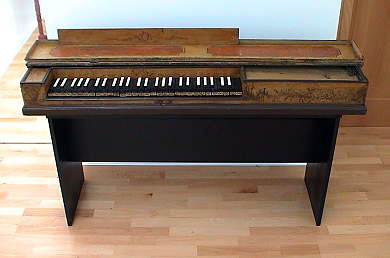 A two-measure introduction starts things off, which is a preview of the last two measures of the first and third verses. The introduction is entirely played by Chris Thomas on harpsichord, this instrument becoming the most dominant element of the song. A two-measure introduction starts things off, which is a preview of the last two measures of the first and third verses. The introduction is entirely played by Chris Thomas on harpsichord, this instrument becoming the most dominant element of the song.
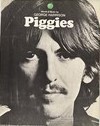 The first verse then begins, which is eight measures in length. George appears with single-tracked lead vocals and acoustic rhythm guitar along with Paul playing snorting staccato bass notes on the one- and three-beats of each measure alternating with Ringo playing kick drum on the one- and two-beats and tambourine beats on every two- and four-beats. These are the only elements heard in the first five measures, apart from the pig snorting sounds from the sound effects tape loop, which is first heard strategically after the lyric “life is getting worse” (in the stereo version). For the sixth measure, George's guitar, Paul's bass and Ringo's tambourine and kick drum stop to allow the harpsichord to come in with a simple ascending quarter-note scale underpinning George's double-tracked lyric “play around in.” The last two measures are actually a repeat of the introduction, the instruments being George and Paul resuming their guitar and bass roles along with Ringo on tambourine and kick drum playing a steady rhythmic beat. Chris Thomas's harpsichord reprises his introductory part here as well along with a backdrop of strings. The first verse then begins, which is eight measures in length. George appears with single-tracked lead vocals and acoustic rhythm guitar along with Paul playing snorting staccato bass notes on the one- and three-beats of each measure alternating with Ringo playing kick drum on the one- and two-beats and tambourine beats on every two- and four-beats. These are the only elements heard in the first five measures, apart from the pig snorting sounds from the sound effects tape loop, which is first heard strategically after the lyric “life is getting worse” (in the stereo version). For the sixth measure, George's guitar, Paul's bass and Ringo's tambourine and kick drum stop to allow the harpsichord to come in with a simple ascending quarter-note scale underpinning George's double-tracked lyric “play around in.” The last two measures are actually a repeat of the introduction, the instruments being George and Paul resuming their guitar and bass roles along with Ringo on tambourine and kick drum playing a steady rhythmic beat. Chris Thomas's harpsichord reprises his introductory part here as well along with a backdrop of strings.
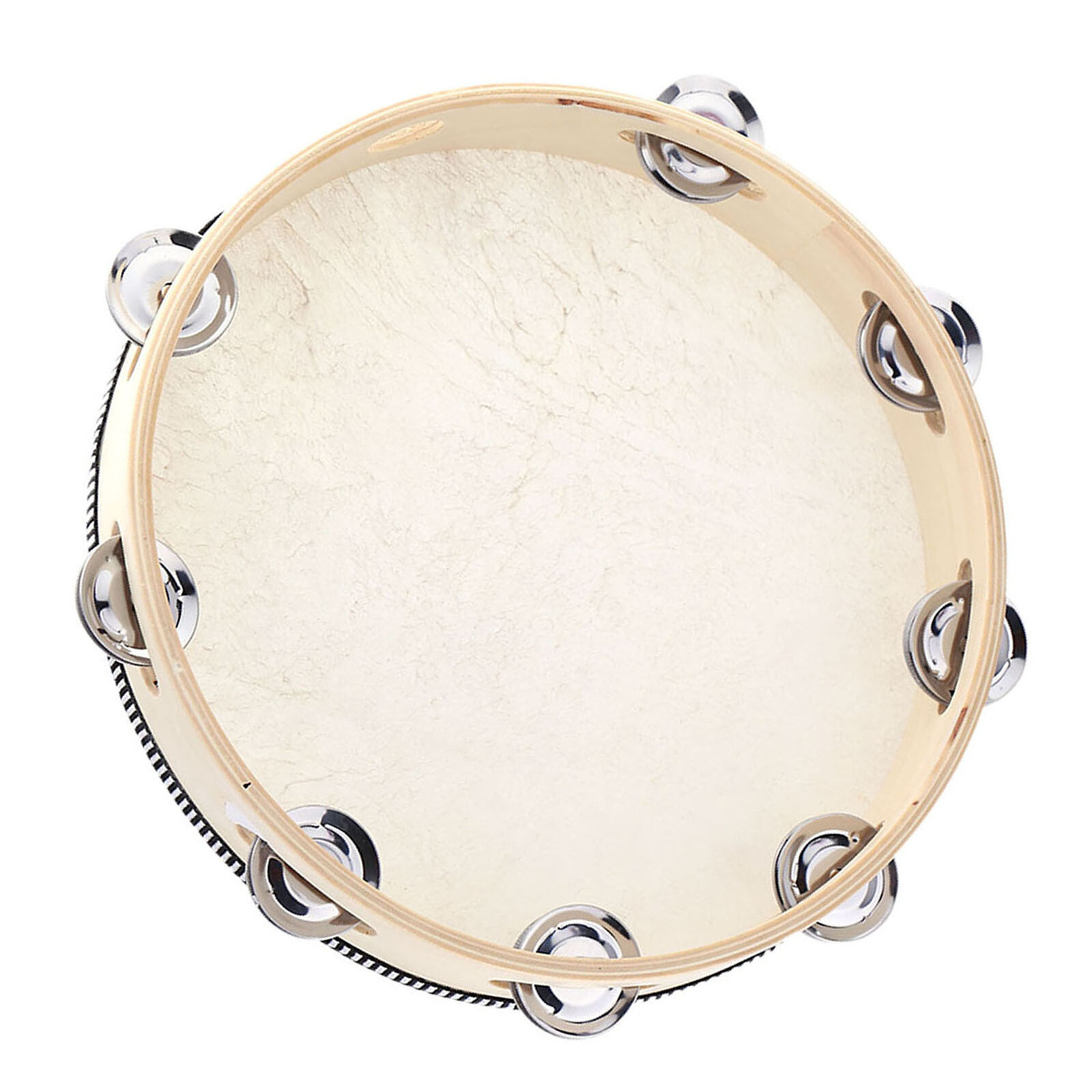 This moves smoothly into the second verse which is also eight measures long. George goes back to single-tracked vocals along with the same Beatles instrumentation of guitar, bass and kick drum / tambourine as heard in the final two measures of the previous verse. One additional feature here is the cellos playing a background counter-melody line for the entire verse. The sixth measure break mimics the first verse, the only difference here is that the cellos follow the ascending harpsichord notes. The seventh measure is virtually identical to what was played in the first verse, apart from Ringo hesitating to come in with the tambourine on the downbeat as if he wasn't sure if he was supposed to play or not. The eighth measure includes a sharp 16th note ascending scale which is used as a transition for the key change that appears in the bridge that follows. This moves smoothly into the second verse which is also eight measures long. George goes back to single-tracked vocals along with the same Beatles instrumentation of guitar, bass and kick drum / tambourine as heard in the final two measures of the previous verse. One additional feature here is the cellos playing a background counter-melody line for the entire verse. The sixth measure break mimics the first verse, the only difference here is that the cellos follow the ascending harpsichord notes. The seventh measure is virtually identical to what was played in the first verse, apart from Ringo hesitating to come in with the tambourine on the downbeat as if he wasn't sure if he was supposed to play or not. The eighth measure includes a sharp 16th note ascending scale which is used as a transition for the key change that appears in the bridge that follows.
 This bridge is seven measures long and is accented throughout with anticipatory eighth notes from the strings. George's vocals are sung through the effect outlined above which sounds like the result of having his nose pinched. George continues his acoustic guitar and Paul changes to eighth note bass playing while Ringo continues his steady tambourine / kick drum rhythm. The harpsichord plays flowing chords on the one- and three-beats of the first two measures and plays a bluesy line in the fourth measure which is shadowed by the cellos. In the fifth through seventh measures, the harpsichord plays eighth note chords along with the strings while George's “damn good whacking” vocal line is double-tracked for added emphasis. This bridge is seven measures long and is accented throughout with anticipatory eighth notes from the strings. George's vocals are sung through the effect outlined above which sounds like the result of having his nose pinched. George continues his acoustic guitar and Paul changes to eighth note bass playing while Ringo continues his steady tambourine / kick drum rhythm. The harpsichord plays flowing chords on the one- and three-beats of the first two measures and plays a bluesy line in the fourth measure which is shadowed by the cellos. In the fifth through seventh measures, the harpsichord plays eighth note chords along with the strings while George's “damn good whacking” vocal line is double-tracked for added emphasis.
 The instrumental verse is next, which is also eight measures long and features an interesting interplay between the harpsichord and the intricate string arrangement. This is directly followed by the final verse which is ten measures long this time, the two additional measures facilitating what listeners initially view as the conclusion of the song. The only harmonies in the entire recording are in this final verse, The Beatles comically singing about “piggies living piggy lives,” immediately followed by more pig snorts (stereo version). The elements included here are identical to the second verse and are performed nearly the same as well. The eighth and ninth measures, however, transcend into minor chords but then make their way back to a final major chord in the tenth measure. The instrumental verse is next, which is also eight measures long and features an interesting interplay between the harpsichord and the intricate string arrangement. This is directly followed by the final verse which is ten measures long this time, the two additional measures facilitating what listeners initially view as the conclusion of the song. The only harmonies in the entire recording are in this final verse, The Beatles comically singing about “piggies living piggy lives,” immediately followed by more pig snorts (stereo version). The elements included here are identical to the second verse and are performed nearly the same as well. The eighth and ninth measures, however, transcend into minor chords but then make their way back to a final major chord in the tenth measure.
 But just when you think the song is done, we hear George saying “One more time” which is spliced into a corny two chord 'Amen'-like conclusion tacked on by George Martin's orchestral score, lest we think the song's finale is too somber. And as the song fades away, John Lennon's taped swine grunts fade into the sunset. But just when you think the song is done, we hear George saying “One more time” which is spliced into a corny two chord 'Amen'-like conclusion tacked on by George Martin's orchestral score, lest we think the song's finale is too somber. And as the song fades away, John Lennon's taped swine grunts fade into the sunset.
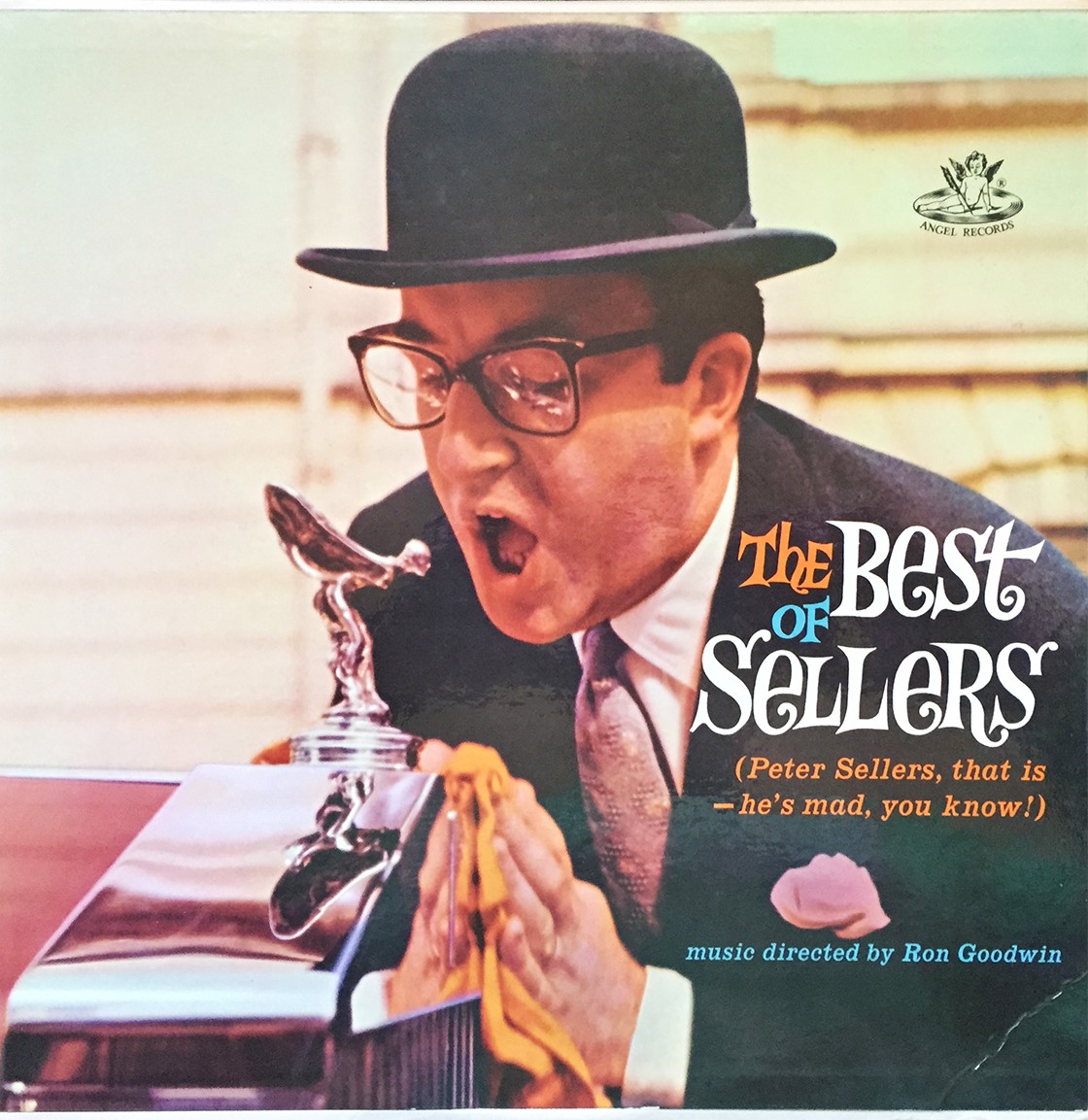 After George guided Chris Thomas through the structure of the song, he sang and played a simple rhythm guitar and was treated to the expertise of those around him, watching his political commentary develop into something unique. Even though John, Paul and Ringo played rather slight roles in the proceedings, their performances were appropriately silly (John) and steady (Paul and Ringo). Both Chris Thomas and George Martin should get a good deal of credit for portraying this less-than-serious composition in the way that it should have been. It's what we could expect from George Martin after all, with his prior extensive work in producing comedy records for Peter Sellers, Dudley Moore and many others. After George guided Chris Thomas through the structure of the song, he sang and played a simple rhythm guitar and was treated to the expertise of those around him, watching his political commentary develop into something unique. Even though John, Paul and Ringo played rather slight roles in the proceedings, their performances were appropriately silly (John) and steady (Paul and Ringo). Both Chris Thomas and George Martin should get a good deal of credit for portraying this less-than-serious composition in the way that it should have been. It's what we could expect from George Martin after all, with his prior extensive work in producing comedy records for Peter Sellers, Dudley Moore and many others.
American Releases
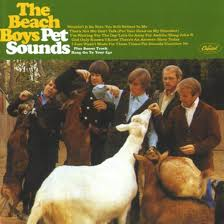 The highly anticipated new Beatles album entitled "The Beatles," affectionately known as the "White Album," was released in the US on November 25th, 1968. "Piggies" was strategically placed between "Blackbird" and "Rocky Raccoon" to facilitate a theme of animal songs on side two of the double-album, possibly in tribute to The Beach Boys album "Pet Sounds" which The Beatles cite as an influence on their music. The "White Album" was first released on compact disc on August 24th, 1987, then as a 30th Anniversary CD release on November 23rd, 1998, and then as a remastered CD on September 9th, 2009. The first appearance in the US of the album as a mono vinyl set was on November 9th, 2014, while a vibrant new stereo vinyl set was released on November 9th, 2018. The highly anticipated new Beatles album entitled "The Beatles," affectionately known as the "White Album," was released in the US on November 25th, 1968. "Piggies" was strategically placed between "Blackbird" and "Rocky Raccoon" to facilitate a theme of animal songs on side two of the double-album, possibly in tribute to The Beach Boys album "Pet Sounds" which The Beatles cite as an influence on their music. The "White Album" was first released on compact disc on August 24th, 1987, then as a 30th Anniversary CD release on November 23rd, 1998, and then as a remastered CD on September 9th, 2009. The first appearance in the US of the album as a mono vinyl set was on November 9th, 2014, while a vibrant new stereo vinyl set was released on November 9th, 2018.
.jpg) Capitol released four of the “White Album” songs sometime in 1969 in a unique format called “Playtapes,” this release called “The Beatles Vol. III.” “Piggies” was one of these four songs, many other songs from the album being included on four other volumes of “Playtapes” released this year. These tapes were made especially to be played on portable tape players and as standard equipment in certain models of Volkswagens at the time. These short-lived releases are quite the collectible today. Capitol released four of the “White Album” songs sometime in 1969 in a unique format called “Playtapes,” this release called “The Beatles Vol. III.” “Piggies” was one of these four songs, many other songs from the album being included on four other volumes of “Playtapes” released this year. These tapes were made especially to be played on portable tape players and as standard equipment in certain models of Volkswagens at the time. These short-lived releases are quite the collectible today.
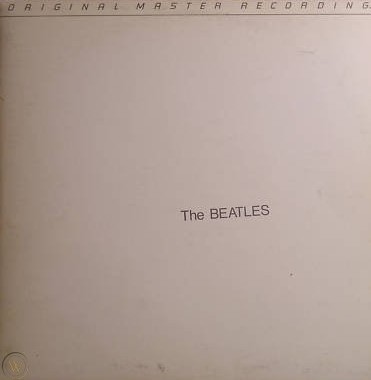 An interesting US vinyl edition of the “White Album” was released on January 7th, 1982, this being manufactured by Mobile Fidelity Sound Lab in Chatsworth, California as part of their "Original Master Recording" series. Their practice was to prepare a new master utilizing half-speed mastering technology from the original master tapes, in this case using the leased sub-master from Capitol Records. This release, which sounded superior to all previous British and American pressings, was packaged in a non-embossed unnumbered cover that did not include the usual poster/lyric sheet or individual Beatles portraits as contained in standard releases. This nonetheless excellent edition of the album was only available for a short time and is quite collectible today. An interesting US vinyl edition of the “White Album” was released on January 7th, 1982, this being manufactured by Mobile Fidelity Sound Lab in Chatsworth, California as part of their "Original Master Recording" series. Their practice was to prepare a new master utilizing half-speed mastering technology from the original master tapes, in this case using the leased sub-master from Capitol Records. This release, which sounded superior to all previous British and American pressings, was packaged in a non-embossed unnumbered cover that did not include the usual poster/lyric sheet or individual Beatles portraits as contained in standard releases. This nonetheless excellent edition of the album was only available for a short time and is quite collectible today.
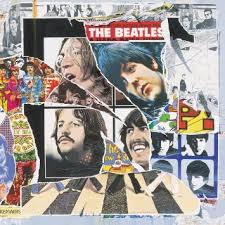 The compilation album “Anthology 3” was released on October 28th, 1996, this set including the original demo recording of “Piggies” from May 29th, 1968. It was one of the seven “Kinfauns” demos that appear on this album. The compilation album “Anthology 3” was released on October 28th, 1996, this set including the original demo recording of “Piggies” from May 29th, 1968. It was one of the seven “Kinfauns” demos that appear on this album.
As mentioned above, the compilation album "Love," which was released on November 20th, 2006, contains slight elements of "Piggies" as found on the tracks "Being For The Benefit Of Mr. Kite! / I Want You (She's So Heavy) / Helter Skelter" and "Strawberry Fields Forever."
 The entire mono Beatles catalog appeared in compact disc form on September 9th, 2009 on the set “The Beatles In Mono.” This was the first time the “White Album” officially appeared in the US in mono, the vinyl edition of this box set being first released on September 9th, 2014. The entire mono Beatles catalog appeared in compact disc form on September 9th, 2009 on the set “The Beatles In Mono.” This was the first time the “White Album” officially appeared in the US in mono, the vinyl edition of this box set being first released on September 9th, 2014.
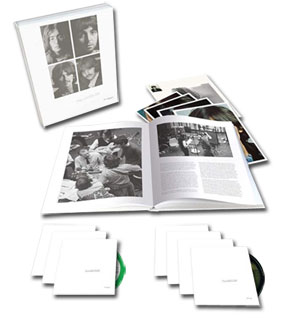 Various editions of the "White Album" were released on November 9th, 2018 to commemorate the 50th Anniversary of its original release. The "Deluxe" edition, which was made available as a 3CD set and a limited edition 180-gram 4LP vinyl set, contained the newly created Giles Martin mix of the "White Album" as well as the complete set of Esher demos that The Beatles recorded in late May of 1968. The "Super Deluxe" 6CD + 1Blu-ray edition also contains "take 12" of the EMI master tape, which includes the strings but omits the vocals. Various editions of the "White Album" were released on November 9th, 2018 to commemorate the 50th Anniversary of its original release. The "Deluxe" edition, which was made available as a 3CD set and a limited edition 180-gram 4LP vinyl set, contained the newly created Giles Martin mix of the "White Album" as well as the complete set of Esher demos that The Beatles recorded in late May of 1968. The "Super Deluxe" 6CD + 1Blu-ray edition also contains "take 12" of the EMI master tape, which includes the strings but omits the vocals.
George Harrison's live album “Live In Japan” was released in the US on July 14th, 1992. Nine Beatles songs appear on this nineteen track collection, the interesting live version of “Piggies” described above being one of them.
Live Performances
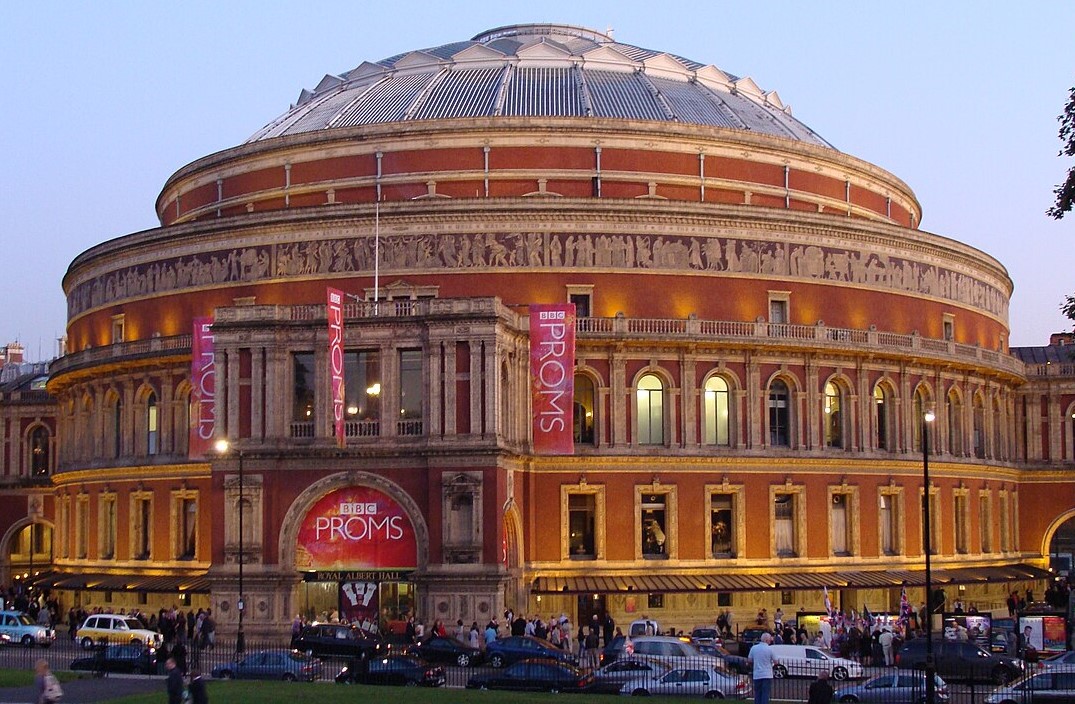 The Beatles, of course, never performed the song on stage, but George's brief tour of Japan did feature it, this tour spanning from December 1st through 17th, 1991. A few months later, on April 6th, 1992, George played a concert at London's Royal Albert Hall, this being a benefit for the Natural Law Party. This concert, his final British stage performance, featured the same set list as his previous Japan tour, including “Piggies.” The Beatles, of course, never performed the song on stage, but George's brief tour of Japan did feature it, this tour spanning from December 1st through 17th, 1991. A few months later, on April 6th, 1992, George played a concert at London's Royal Albert Hall, this being a benefit for the Natural Law Party. This concert, his final British stage performance, featured the same set list as his previous Japan tour, including “Piggies.”
Conclusion
 While many critics and authors dismiss "Piggies" as a blight on George Harrison's otherwise commendable songwriting career for The Beatles, its appeal is praised by a sizable percentage of the group's fans. Younger audiences such as I (I was seven years old when I first heard the song) thought the song was funny and clever, obviously because I was oblivious to its political references. The presentation of the song, which prominently featured a baroque-style harpsichord and string arrangement along with camp vocal work and swine grunts, reveals the intent to display the subject matter in a humorous way. While the intent of the lyrics was dark and cutting, the 'fab four' sense of humor, as well displayed on their early Christmas messages, was chosen as the vehicle to reveal this message to the world. While many critics and authors dismiss "Piggies" as a blight on George Harrison's otherwise commendable songwriting career for The Beatles, its appeal is praised by a sizable percentage of the group's fans. Younger audiences such as I (I was seven years old when I first heard the song) thought the song was funny and clever, obviously because I was oblivious to its political references. The presentation of the song, which prominently featured a baroque-style harpsichord and string arrangement along with camp vocal work and swine grunts, reveals the intent to display the subject matter in a humorous way. While the intent of the lyrics was dark and cutting, the 'fab four' sense of humor, as well displayed on their early Christmas messages, was chosen as the vehicle to reveal this message to the world.
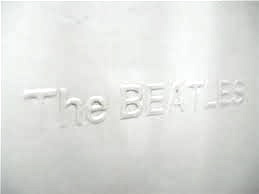 Since there was deliberation among George Martin and The Beatles about whether they should have trimmed some of the extraneous tracks off of the “White Album” and just released a single album instead, many to this day debate about which of these thirty songs would have made the grade and which would have been left off. “Piggies” usually makes the 'cut' list. I disagree. George's humorous political statement adds a perfect touch of levity and character to a very well-rounded variety of musical styles. It just wouldn't be the “White Album” without “Piggies!” Since there was deliberation among George Martin and The Beatles about whether they should have trimmed some of the extraneous tracks off of the “White Album” and just released a single album instead, many to this day debate about which of these thirty songs would have made the grade and which would have been left off. “Piggies” usually makes the 'cut' list. I disagree. George's humorous political statement adds a perfect touch of levity and character to a very well-rounded variety of musical styles. It just wouldn't be the “White Album” without “Piggies!”
Song Summary
“Piggies”
Written by: George Harrison
- Song Written: April, 1966 to May, 1968
- Song Recorded: September 19 & 20, October 10, 1968
- First US Release Date: November 25, 1968
- First US Album Release: Apple #SWBO-101 “The Beatles”
- US Single Release: n/a
- Highest Chart Position: n/a
- British Album Release: Apple #PCS 7067-7068 “The Beatles”
- Length: 2:04
- Key: A major
- Producers: Chris Thomas, George Martin
- Engineers: Ken Scott, Mike Sheady, John Smith
Instrumentation (most likely):
- George Harrison - Lead and Backing Vocals, Acoustic Guitar (1968 Gibson J-200)
- Paul McCartney - Bass (1964 Rickenbacker 4001 S), backing vocals
- John Lennon - Sound effects tape loops, backing vocals
- Ringo Starr - Tambourine
- Chris Thomas - Harpsichord
- Henry Datyner - violin
- Eric Bowie - violin
- Norman Lederman - violin
- Ronald Thomas - violin
- Eldon Fox - cello
- Reginald Kilbey - cello
- John Underwood - viola
- Keith Cummings - viola
Written and compiled by Dave Rybaczewski
|
IF YOU WOULD LIKE TO MAKE A DONATION TO KEEP THIS WEBSITE UP AND RUNNING, PLEASE CLICK BELOW!
Sign Up Below for our MONTHLY BEATLES TRIVIA QUIZ!
|